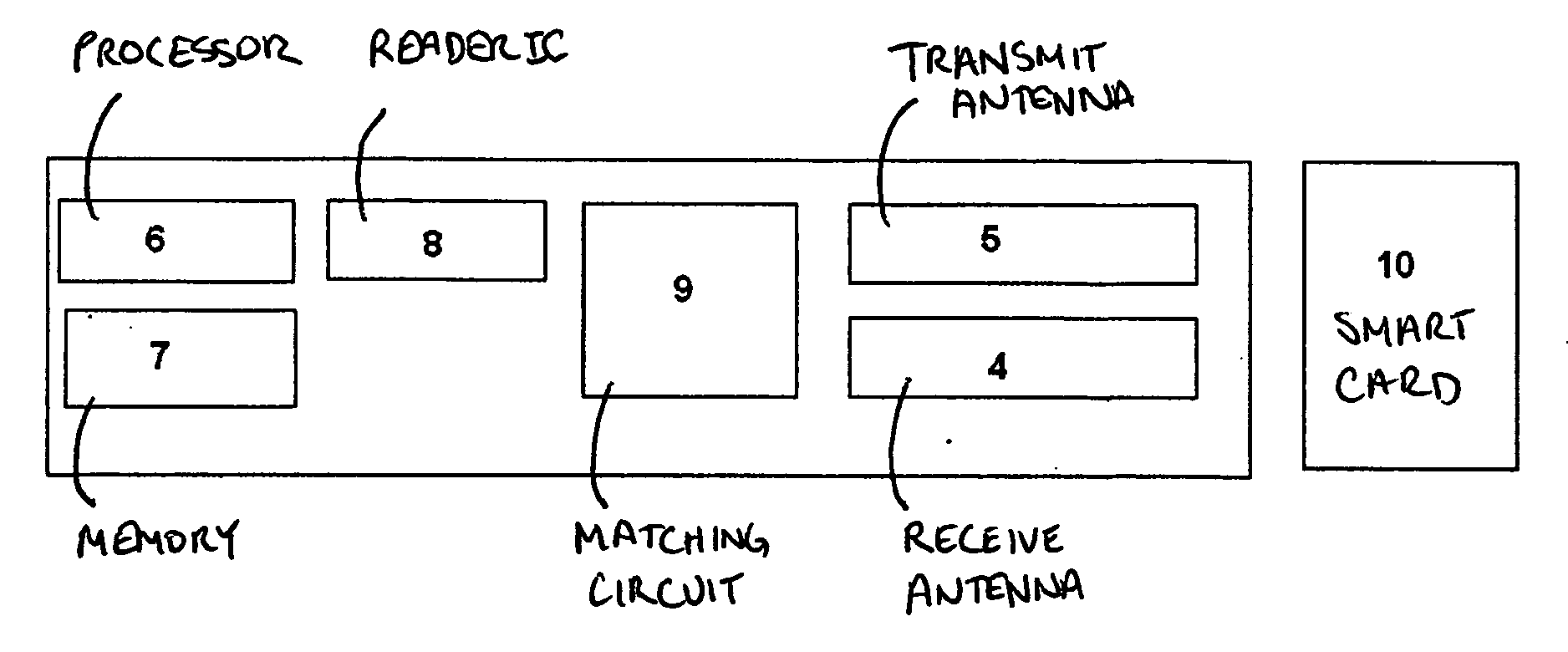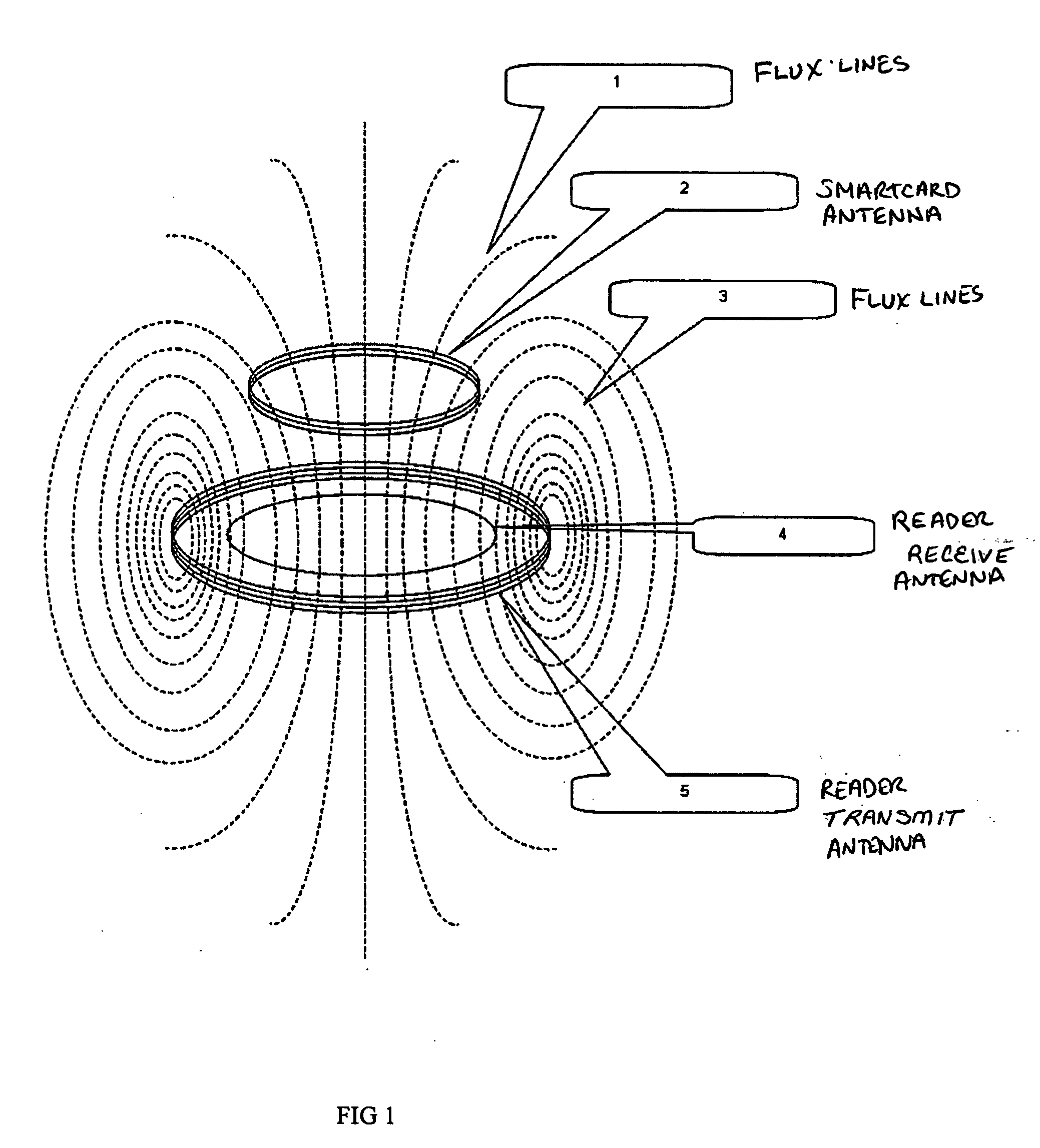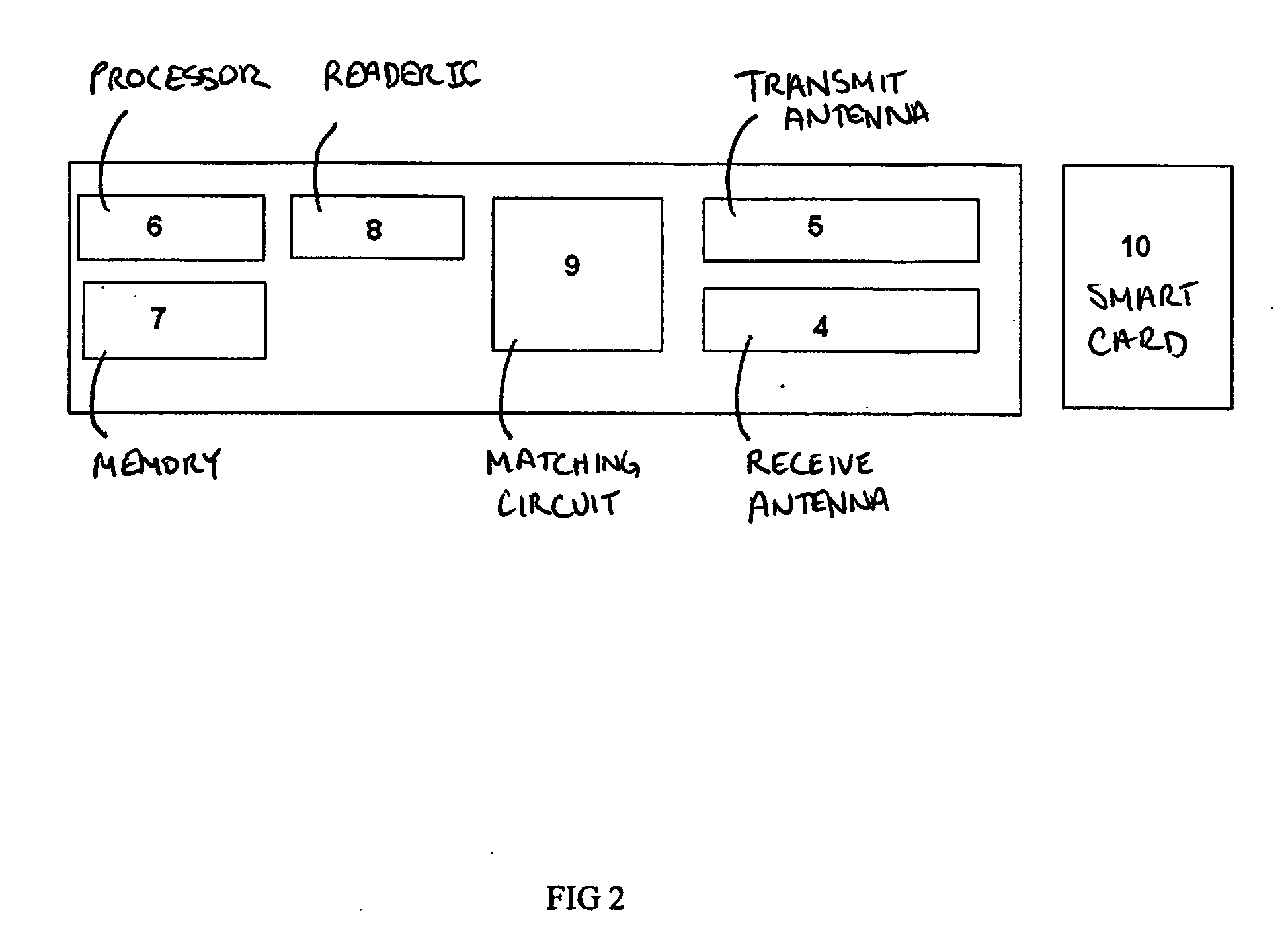Contact-less smart card reader
a technology of contactless and smart cards, applied in the field of contactless smart card readers, can solve the problems of not explicitly addressing the issue of improving readability, unable to address the aforesaid issue, and unable to capture so as to increase the signal to noise ratio in the reader, and facilitate the capture of maximum number of flux lines.
- Summary
- Abstract
- Description
- Claims
- Application Information
AI Technical Summary
Benefits of technology
Problems solved by technology
Method used
Image
Examples
Embodiment Construction
[0028]The following includes description of particular embodiments of the present invention, which is purely for the sake of understanding and not by way of any sort of limitation.
[0029]As stated aforesaid, the present invention primarily aims at increasing the signal qualities received from a smart card by improving the antenna geometry of the smart card reader. This technical advancement was hitherto unknown and not conceived by persons skilled in the art.
[0030]From FIG. 1 and the foregoing description it ought to be clear that the card sends data to the reader by means of load modulation on the carrier. When the card does load modulation, the total number of flux lines that pass through the transmitting antenna of the reader changes. This change in number of flux lines is recognized by the reader as change in voltage and this is used to receive data from the contact-less smart card.
[0031]Similarly, when the card does load modulation, the total number of flux lines that pass throu...
PUM
 Login to View More
Login to View More Abstract
Description
Claims
Application Information
 Login to View More
Login to View More - R&D
- Intellectual Property
- Life Sciences
- Materials
- Tech Scout
- Unparalleled Data Quality
- Higher Quality Content
- 60% Fewer Hallucinations
Browse by: Latest US Patents, China's latest patents, Technical Efficacy Thesaurus, Application Domain, Technology Topic, Popular Technical Reports.
© 2025 PatSnap. All rights reserved.Legal|Privacy policy|Modern Slavery Act Transparency Statement|Sitemap|About US| Contact US: help@patsnap.com



